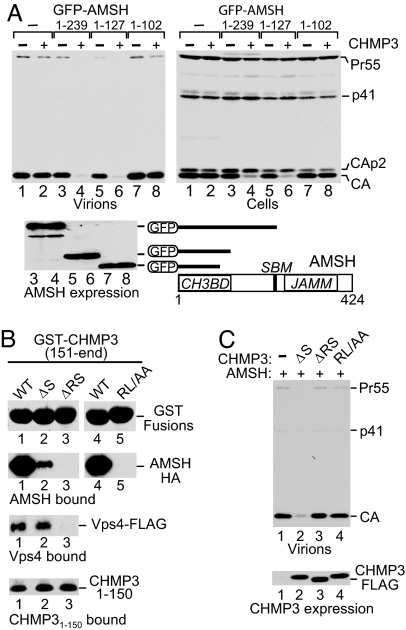Fig. 5.
Inhibition of HIV-1 release by full-length CHMP3 is triggered by the CHMP3-binding domain of AMSH and abrogated by point mutations in the AMSH-binding site of CHMP3. (A) The N-terminal CHMP3-binding domain (CH3BD) of AMSH is both necessary and sufficient to trigger the inhibition of HIV-1 release by WT CHMP3. 293T cells were cotransfected with 1.5 μg of HIV-1 proviral DNA and expression vectors for GFP-AMSH truncation mutants and WT CHMP3, or with the appropriate empty vectors (2.5 μg each). HIV-1 Gag and GFP-AMSH fusions were detected by Western blotting with anti-CA and anti-GFP serum, respectively. SBM, STAM-binding motif. (B) GST pull-down showing that C-terminal CHMP3 residues are essential for binding to AMSH-HA and Vps4A-HA but not to CHMP31–150FLAG. (C) Mutations that abrogate binding to AMSH also abrogate the ability of CHMP3 to inhibit HIV-1 release in the presence of GFP-AMSH(D348A). 293T cells were cotransfected with 1.5 μg of HIV-1 proviral DNA and expression vectors (500 ng each) for GFP-AMSH(D348A) and WT or mutant CHMP3-FLAG. HIV-1 Gag and CHMP3-FLAG mutants were detected by Western blotting with anti-CA serum and anti-FLAG antibody, respectively.

